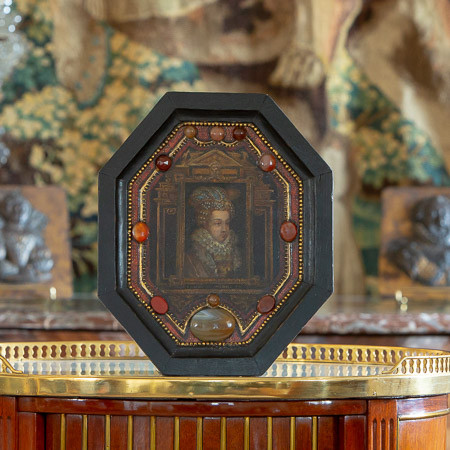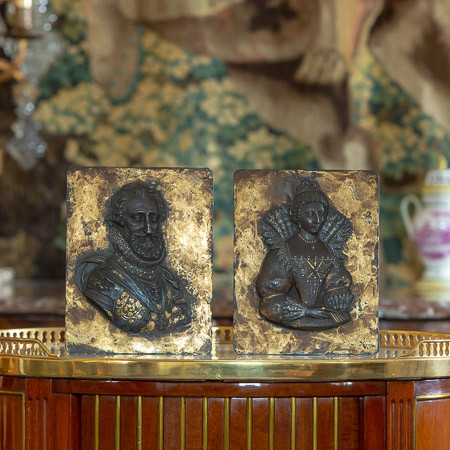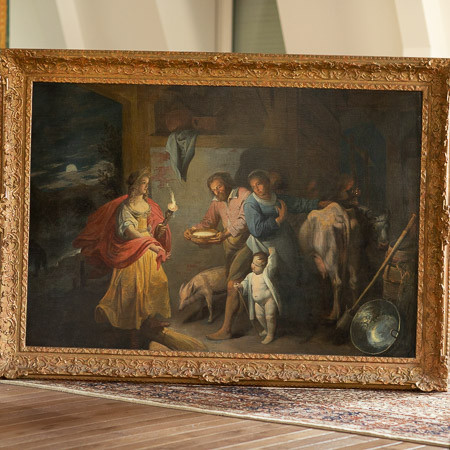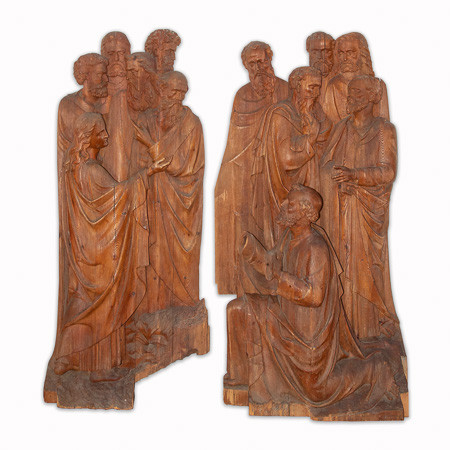About
The study of «Christ in glory with God the Father and the Holy Spirit surrounded by angels with the symbols of the Passion» from circle of El Greco (Domenikos Theotokopoulos) presents aesthetic characteristics similar to the pictorial work of the great master, particularly recognizable by the disproportionately elongated shapes and by a search for movement stemming from the Mannerist unrealism of Tintoretto. This drawing comes from the collection of Giuseppe Vallardi (1764-1863), Milan (L.1223).
The drawing in pen and brown ink was executed on a beige-pink canvas. Inscriptions in old Italian, on both sides of the paper, probably dating from the 15th century, testify to the reuse of an earlier paper by the artist.
This Trinity is a stylistic shortcut to the works of Albrecht Dürer and Michelangelo. The composition is a reworking of an engraving by Dürer titled The Adoration of the Holy Trinity from 1511. Whether in El Greco's trinity or Dürer's, God is holding the lifeless body of his son, a dove representing the Holy Spirit is flying above God the Father, and angels surround the scene. In both works, the angels bear the same symbols of Christ's passion. As for the pose of Christ, it is inspired by Michelangelo. He expressed himself more by the attitudes and movements of the body than the features of the face. El Greco discovered Michelangelo during his Roman period and then integrated the style of his human representations.
We find in this study the same composition and codes as that carried out for The Holy Trinity of the altarpiece of the high altar of Santo Domingo el Antiguo in Toledo commissioned in 1577 from El Greco. A conventional figure, God is painted as an old man with a long beard. He is maintaining the body of Jesus, who wears long hair and a short beard. The flattened faces are a constant of the painter. The intense expression of the characters is probably the legacy of Greco's appropriation of the figurative art technique specific to the West. With a sense for the beauty of lines, contorted gestures appear in dramatic movements. An extreme sensation of the sacred is palpable.
The arrangement of the composition and the techniques are also comparable with two drawings, executed by El Greco. They represent Saint John the Baptist and Saint John the Evangelist and are in the collections of the Jan-Krugier Foundation. The two preparations on paper are drawn in pen and brown ink, handsomely worked in brown wash and heightened with white.
The remaining graphic work of the artist is extremely reduced; only five drawings, at most, are considered authentic by the majority of specialists in art history. Therefore, even if this study cannot be credited to El Greco for sure, it embodies the main features of the artist's audacious work.
The evolution of Greco, which goes from the influence of Tintoretto to the conquest of his own personality, brings to Greco’s works the best of Venetian technique. Each of his artworks vibrates with a tormented or exalted or inner life. Creator of forms, he spread his style in 16th century Spain and is considered one of the first great modern painters.
This compositional study has a number of stylistic similarities with the paintings of the extraordinary personality of El Greco (1541-1614). The combination of Venetian influences, especially that of Tintoretto, with the fiery expressions of the angels' faces and the elongated, slightly flat features of God the Father are not at all different from what can be seen in the paintings of the artist. But comparisons with autograph drawings by the artist, which could confirm an attribution to the latter, are more or less impossible, because the graphic work that has come down to us is extremely little; only about five leaves are considered authentic by most experts.
Among the unmistakably autograph works on paper are the studies depicting Saint John the Baptist and Saint John the Evangelist, which were once part of Sir William Stirling-Maxwell's famous collection of Spanish drawings. They are now in the Jan Krugier Foundation in Lausanne. They are preparatory to the two side canvases of the lower section of El Greco's altarpiece representing the Assumption of the Virgin, painted for the high altar of the Cistercian convent of S. Domingo el Antiguo, in Toledo.
Although it is obviously very difficult to add an additional sheet with certainty to the corpus of known drawings by El Greco, the attribution of this drawing to him should be seriously considered for stylistic reasons. The long pen-and-ink inscriptions on the verso and the partially visible one on the recto seem to be entries from books of legends in Italian, apparently of quite old date - possibly the 15th century. The preparation of the front before drawing, testifies to the reuse by the artist of an earlier sheet of paper.
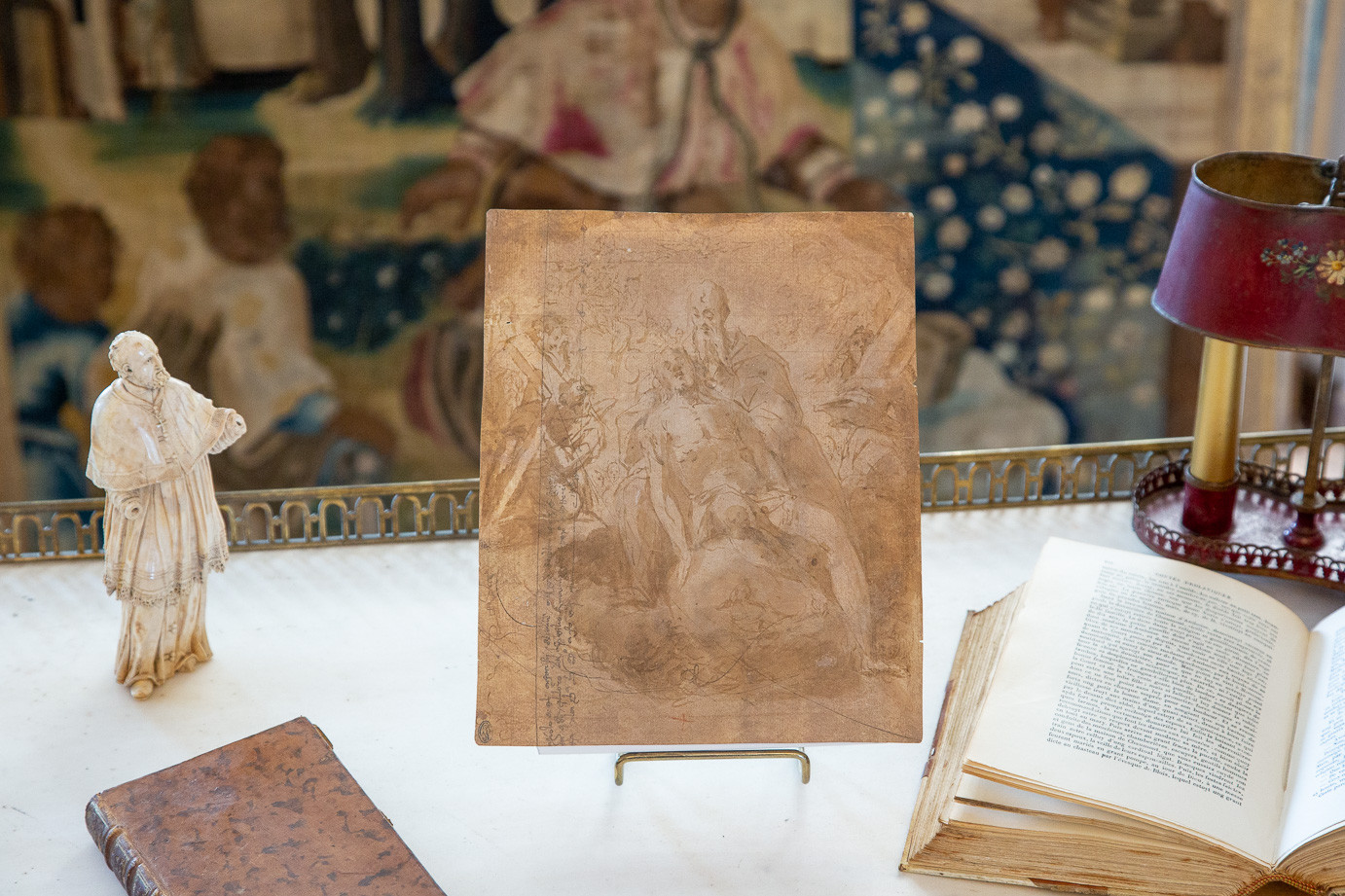
Characteristics
- Time: 16th century
- Material or technique: Paper
- Sizes: 19.5 x 24.5 cm (Width x Height)
Provenance
Giuseppe Vallardi (1764-1863), Milan (L.1223)
Museography
This drawing attributed to El Greco was acquired by the Hispanic Society of America.



